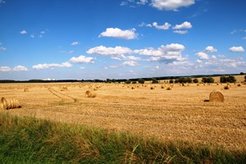Changing land use is good for biodiversity
A research study, published in the Proceedings of the National Academy of Science USA, led by Profs Eric Allan and Markus Fischer at the University of Bern, shows that farmers can help protect grassland biodiversity by varying management intensity over time. This reduces some of the negative effects of intensive land use, particularly for rare species.

A team of 58 scientists from Germany and Switzerland, including Prof. Ernst-Detlef Schulze and Dr. Ingo Schöning of Max Planck Institute for Biogeochemistry, assembled a uniquely large dataset on the biodiversity of up to 49 groups of organisms, including groups of bacteria, fungi, plants and animals. They used data from study sites that they had established in 150 grasslands in three regions of Germany, the Biodiversity Exploratories (www.exploratories.de), which varied from extensively managed and lightly grazed to intensively grazed or mown grasslands with high fertilizer input. The scientists used this data to compile a novel index of “multidiversity”, which measures total ecosystem biodiversity. The study showed that overall biodiversity declined very strongly with increasing land-use intensity and that this was particularly true for rarer species. Plants, grasshoppers and butterflies declined most strongly.
The study used a uniquely comprehensive dataset spanning many types of organisms and a novel measure of total ecosystem biodiversity. It was able to provide very strong evidence for the importance of extensively managed grasslands for nature conservation. According to Eric Allan "This new index provides a single measure of biodiversity for an ecosystem and should make it easier to assess the effects of conservation measures or restoration efforts on biodiversity".
Interestingly, the scientists also found biodiversity to be much higher in grasslands in which land-use intensity had varied over the last few years. Markus Fischer said that "This suggests that varying management intensity over time could be a novel strategy to maintain biodiversity in grasslands, for instance by altering the number of livestock or the frequency of mowing between years".
The rare species in the study benefited particularly from changing land use over time: at intermediate land-use intensity, the biodiversity of the rarer species was almost twice as high when land-use intensity varied between years, increasing from 18% to 31% of the maximum. "This result shows that farmers could do a lot for biodiversity conservation simply by varying the intensity of their land use between years, as long as the mean intensity of management does not get too high", said Eric Allan.
